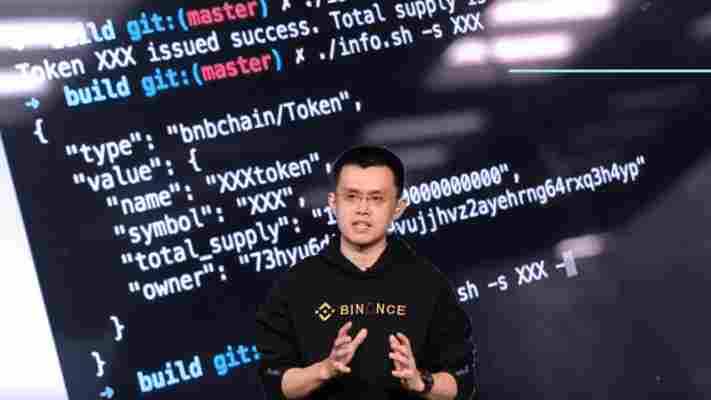Russia , ruled by Vladimir Putin ‘s arguably authoritarian regime, wants to leverage blockchain technology to host Moscow ‘s administrative services and boost transparency .

Essentially, the government is looking for a contractor to build an Ethereum-based system to host the issuance of property ownership documents, the allocation of slots at farmer markets, and wait for it: a voting platform which enables Moscow residents to have their say on matters such as locations for new bike paths, street decoration, and city events, CoinDesk reports .
The estimated cost of development of such a system will approximately be $860,000 and will take around 60 days to build once a contractor has been chosen.
Apparently, the aim is to leverage blockchain technology to boost public confidence in Moscow ‘s electronic capabilities by increasing transparency – something for which Russia is not known for inside or outside of its borders .
It goes without saying that most news coming out of Russia should be met with a certain level of skepticism given Putin ‘s regime is hardly known for playing by the rules.
When it comes to blockchain and cryptocurrency , Russia has had a tumultuous – some would say confusing – history with both.
What bothers me the most, though, is that the hype around blockchain is seemingly canceling out Russia ‘s state-run propaganda.
While some want to see blockchain do well, let’s not let optimism get in the way of what is useful, plausible, and true.
And as free press, we have a responsibility to identify propaganda and the failure to do so is beginning to be depressing.
Spanish police arrest Bitcoin launderers in international credit card fraud case
Spanish police have arrested 35 people allegedly involved in an international counterfeit bank card ring which laundered its profits using Bitcoin .

Criminals mad e more than $ 675,855 ( € 600,000) and laundered more than $ 891,250 (€1,000,000), according to local media reports.
Most of those arrested hailed from Spain , Nigeria, Cameroon, Morocco, and Equatorial Guinea.
The criminals defrauded 210 victims in Spain , and a further 20 in Israel , Denmark , Germany , France , and Greece.
Spain ’s Civil Guard – the force leading the investigation – says it’s detected 104 fraudulent cards made in Spain and other 12 countries.
The investigation was sparked after a car rental company in Alicante ( Spain ) reported the use of a fraudulent card.
Fraudsters resorted to the widely used phishing method to gain victims’ credit card details and credentials.
They also used skimming to copy card s’ magnetic strips in a bid to clone them. Finally, they resorted to the ‘Bin attack fraud’ method whereby they generated new card numbers based on the existing card number.
Counterfeit cards were used to pay for hotels , flights , train tickets, rental cars, and technology equipment.
Some of the arrested individuals were tasked with laundering the funds into Bitcoins through several unnamed companies based in Finland , Estonia , and the UK .
The money was also laundered in the US , Equatorial Guinea, and Benin using money transfer services.
Binance suddenly finding $775,000 in XLM is totally not a publicity stunt
Prominent cryptocurrency exchange Binance has apparently stumbled upon almost 10 million Stellar (XLM) tokens, worth $775,000 — you know, just laying around.

According to a Binance blog post , the firm had been unknowingly receiving dividends for validating transactions on the Stellar network since August 31 2018.
“Fast forward to this week, when we looked into the staking of Stellar for Binanceom, we discovered that we had already earned 9,500,000 XLM ($775,000 USD) worth of extra XLM tokens,” said Binance.
Binance further claimed it had followed Stellar’s advice to change certain settings on its hot and cold cryptocurrency wallets.
Staking cryptocurrency to receive dividends
Unlike Bitcoin miners , who contribute raw computing power to cryptographically validate transactions, blockchains such as Stellar allow holders to join network consensus by locking their tokens in a process called “staking.”
These Proof-of-Stake (PoS) systems reward participants with incentives scaled to the amount of tokens staked. Major blockchain Ethereum is currently preparing to transition from a consensus algorithm that leverages Proof-of-Work to a PoS-style method.
In light of the odd discovery, Binance has opted to add XLM staking support straight away. Curiously, it has also scheduled to distribute all of the ‘found’ cryptocurrency to any Binance user that holds at least 10 XLM tokens as of July 20.
Calculated using the daily average of their XLM balance, users are promised a proportional amount of their staking reward potential, as well as an appropriate proportion of the overall 9,500,000 XLM prize pool.
“Although the staking rewards have varied over time as the wallet balances have grown, for the first distribution, users holding XLM may expect to receive a first staking reward amount equivalent to roughly 10-12 months worth of staking rewards,” added Binance.
Pardon my skepticism, but I hope this isn’t just one bizarre publicity stunt. No, surely not. A happy accident.
[H/T The Block ]











